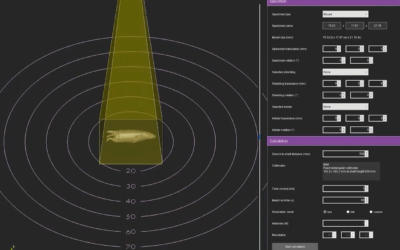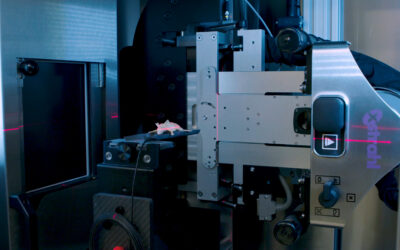Glioblastoma (GBM) is a hyper vascular malignant tumour with a poor prognosis. Despite the availability of current chemotherapy and targeted therapies in GBM, not many therapeutic benefits have been achieved due to GBM developing drug resistance. Most therapies have produced a decrease in tumour growth during early stages of treatment followed by aggressive tumour recurrence. Therefore, there is a need for an agent that will decrease tumour growth and neovascularization with reduced resistance to therapy.
In their study “Intravenous Formulation of HET0016 Decreased Human Glioblastoma Growth and Implicated Survival Benefit in Rat Xenograft Models” Meenu Jain et al describe the development of an improved intravenous (IV) formulation of HPßCD-HET0016 and the results of its administration in a rat model of human GBM.
It was established that IV administration of HPßCD-HET0016 in a rat model of human GBM significantly reduced tumour growth in developing or developed tumours as compared to intraperitoneal (IP) HET0016 treatment, which utilized focal point irradiaition. It appears that the IV formulation facilitated increased delivery of HET0016 to the hypervascular and hypoxic tumour sites, due to EPR effects. Moreover, the effect of IV HET0016 was not cell specific and showed similar reduced tumour growth in syngeneic tumour (GL261) models. The distribution profile of HPßCD-HET0016 formulation showed better bioavailability and retention in tissue with a higher brain to plasma ratio in the IV treatment group as compared to the treatment with IP preparation.
The findings suggest that the IV formulation or encapsulation of HET0016 in a non-toxic delivery system may have the benefits of increased half-life (protect the drug from degradation during circulation and early clearance), lower toxicity, enhanced EPR effect over the IP preparation and improved the therapeutic index.
The anti-tumour effect of HPßCD-HET0016 was supported by decreased tumour cell proliferation, migration, and neovascularization. There was a clear reduction in the number of Ki67 + cells in the IV treatment groups as compared to IP groups. The reason for observing the significant reduced proliferation in IV treatment groups may be that HET0016 is effective in preventing the regrowth of established tumour due to increased bioavailability following IV administration.
It is concluded that HPßCD-HET0016 is effective in inhibiting tumour growth through decreasing proliferation, and neovascularization. Furthermore, HPßCD-HET0016 significantly prolonged survival in PDX GBM811 model.
This study was conducted using a SARRP.
This Xstrahl In Action was adapted from a article found on a National Library of Medicine website.






